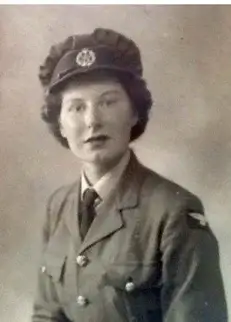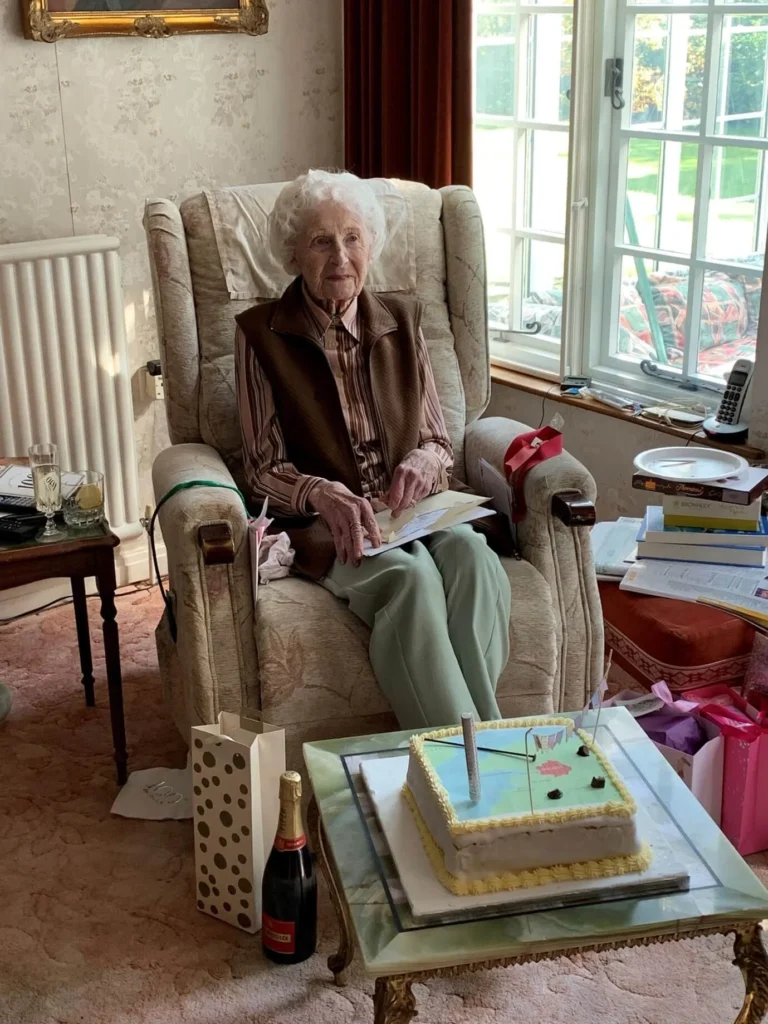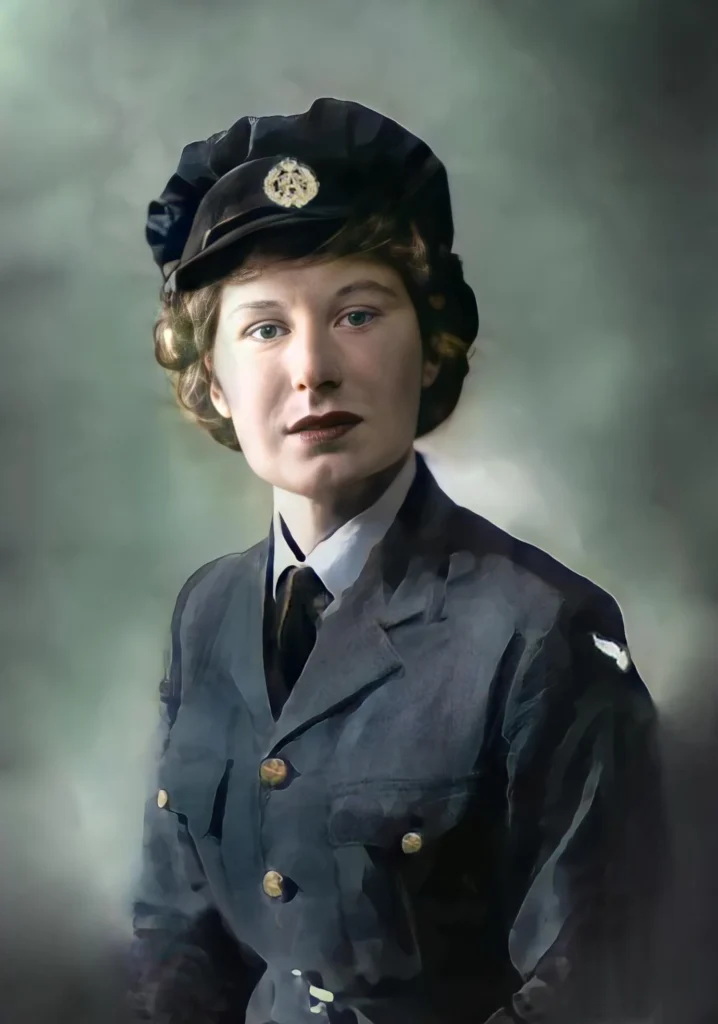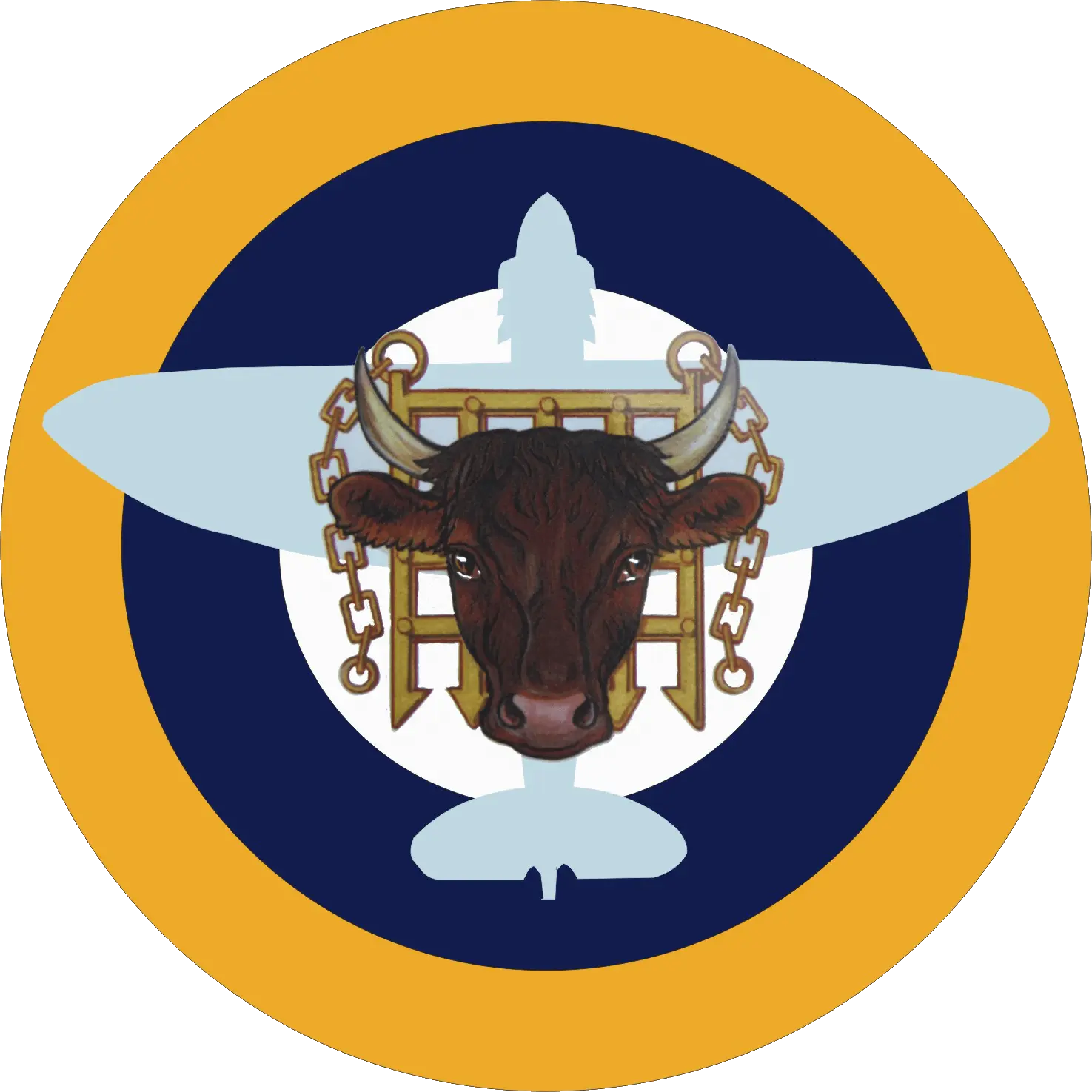Pauline Penrose
A personal account of time during the war by Pauline Penrose
The Memories of Pauline Holmes
I was a conscript although in hindsight was pleased as l had a very interesting time. I was 20 years old and had to initially report to RAF Innesworth, which was huge place, this was firstly to collect uniform and various kit. There we were square bashing in bitterly cold weather and getting very hungry. One day our lunch was a pie and a dollop of mashed potato. When l opened the pie all it held was an enormous eye lid with all the black lashes on it. One did not complain.
After basic training was completed, I was posted off to RAF Hornchurch in Essex, a fighter station on the front line, with Spitfires squadrons. On arrival we were assessed for the work and l was placed to be a plotter which meant positioning ‘friendly’s and ‘hostiles’ on the table. After a few months, I was asked if l would be prepared to assist the draughtsman as l had previous experience in a drawing office. Apparently, he was hardly ever in his office being keen on table tennis and playing with anyone who was on a break. After a couple of weeks, as l was deemed capable, he was posted overseas. The plotting table did not cover a sufficient area so a larger one was needed and being supplied with the stencils, l set to work.
It covered the whole Southeast of England from the Wash to and including the Isle of Wight. It was not long before Hornchurch operations room was moved because of bomb damage. I was transferred to North Weald, but because their one had also received damage, I ended up at the ops room, which was situated in Blake Hall, away from the airfield for obvious reasons.
We were billeted in huts and from the air it must have looked like a farm with cattle grazing in the fields. My drawing office was in a spacious front bedroom with a sink for washing my instruments. I was kept busy painting the numbers of the squadrons that were constantly being changed these were hung round the ops room, which was on the ground floor. Also, I had to repair the damage to the ops table because of the wear, and as I had to climb on the table, I was given special permission to wear trousers to preserve my dignity.
Apparently, the Air Sea Rescue tables also needed updating and I was asked if l could draw and paint two. I was told what was needed. There were four different listening out stations in different colours positioned on the table. Each had to be calibrated in the matching colour and took ages to make. A hole was drilled through each station with a cord threaded through and a metal weight on each end. When a signal was received the position of the downed aircraft was located by triangulation. These tables were taken to the control tower at Swingate near Dover. One table covered the
North Sea and the other the Channel. They received plenty of use as l had to return with my pots of paint to repair them.
Another unusual job was for Squadron Leader Beck who was in charge of the RAF Regiment who were camped round the airfield to protect it if the enemy parachuted in. Because of the constant wet weather his sheets, that had to be filled out with leave, sick etc. were suffering, so after a discussion it was decided to use sheets of celluloid roughened on one side so that I could replicate the desired sheets in ink and then flood with white paint. The main problem for me was that l had to print a mirror image, but it proved highly successful. Squadron Leader Beck told me that although they lived under canvas during a terrible winter his men never caught colds until going on leave. Close by were American Stations with Flying Fortresses and l had seen the paintings on the planes of scanty clad girls. I am no artist, being more comfortable drawing machinery, but one Christmas I had a go.
Some months before D Day l was asked to draw a map of the Normandy coast and make numerous flags representing brigades and divisions, red English and blue Canadian. It was all very hush hush.
On the morning of D Day, l was woken early and told to go to the hut of the Intelligence Group where Squadron Leader Barton was in charge. It was a hectic day as we were receiving all the information of the landings enabling our fighter planes to engage with the enemy or escort the bombers. I was having to position the flags as they progressed or were beaten back. I remember that the Canadians suffered many losses. There were camp beds available as we were expected to stay locked in the hut but being the only woman l refused and after having promised to tell no one was allowed to go back to my bed. I was back early the next morning for another busy day. By then the news was out.
The Hurricane 15 NWAMA
There was a plea for training WAAFs to be ferry pilots, so l volunteered. I passed the medical and had to go to Ad astral House, the home of the Air Ministry in Kingsway, London, to be interviewed by Squadron Leader Adams. The end of the war was approaching so nothing further was heard. Both my sons said a good thing that l never learned to fly as l have no sense of direction. In May 2015 there was a story in the Radio Times relating to everyone celebrating VE Day. I sent in an article stating that
everyone at North Weald was confined to camp that day in case the Luftwaffe decided to make one last raid to drop bombs on Britain. As my address was attached to the item, I received a letter from Georgina Cobb who was also stationed at North Weald and remembered that order. She was in the small ATS detachment at the station. I understand they had to know where we were engaging the enemy in order to make sure that our aircraft were not shot down by “Friendly fire.”
I was stationed at Hornchurch although the ops room was in a Masonic building which had been requisitioned. I believe near Romford, and we were bussed in each day. Because l had drawing office experience, l took over from the draughtsman who was posted overseas. The original plotting table did not cover sufficient area, so l was commissioned to paint one covering the area from the wash on the East coast to and including the Isle of Wight. There was a large barn like building at the back where l worked. Almost as soon as it was finished the Hornchurch ops room was closed and we were transferred to North Weald. There l painted two Air Sea Rescue tables.
We were billeted in what had been married quarters and they were basic, no bathroom and no hot water unless a fire was lit under a tub which was never done. In order to get a bath, we had to walk a short distance away to a bath house where there were no plugs, but a hanky wrapped round a penny did the job. As soon as l went on leave the first thing l had, was a hot bath. We all washed each day in cold water in the kitchen sink.
Because l was now on day duties to avoid clashing with the girls on shift work, l was billeted out to a Mrs. Dupin for a small bedroom for seven and five shillings a week in a house in Hainault Road Romford. She was very kind to me and woke me every morning with a cup of tea and at night cocoa and a cake. No food expected. One of the pilots was the ace Paddy Finucane who l knew slightly and was killed when l was at Hornchurch.
At Hornchurch our C.O. Was Squadron Leader Ronald Adam the actor and Playwright also Cyril Raymond who played Celia Johnson’s husband in Brief Encounter with Trevor Howard. The station was exceptionally well run by Flight Lieutenant Cansdale who had run West End theatres.
We were top heavy with Dukes and Lords who were mostly useless. One well known Duke, who shall be nameless in deference to his family, when on the dais supposedly in charge had a lower rank sitting beside him to make sure that no mistakes were made.
I started at Hornchurch at the beginning of 1942 and must have been transferred to North Weald over a year later. I can’t be precise.
The coloured photo was done by Mark?
I was 20, but soon became a Corporal.
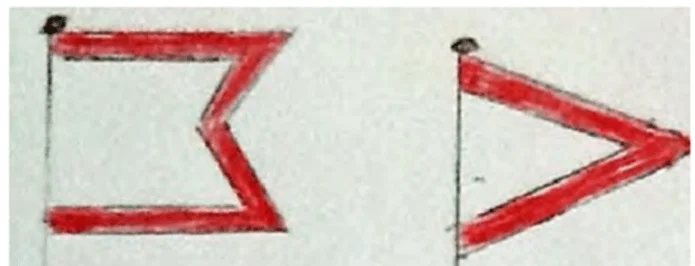
A rare interview with Pauline Penrose
